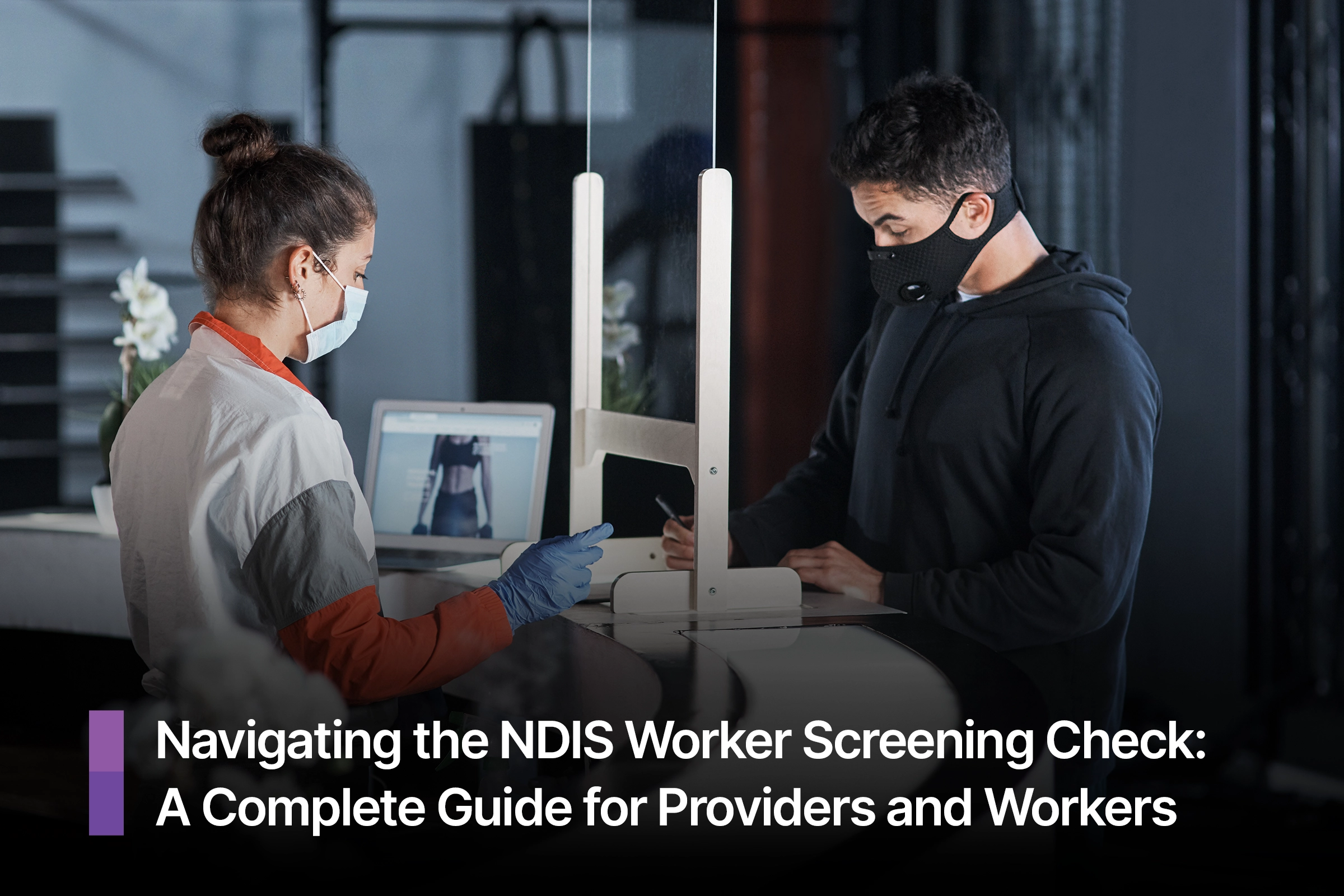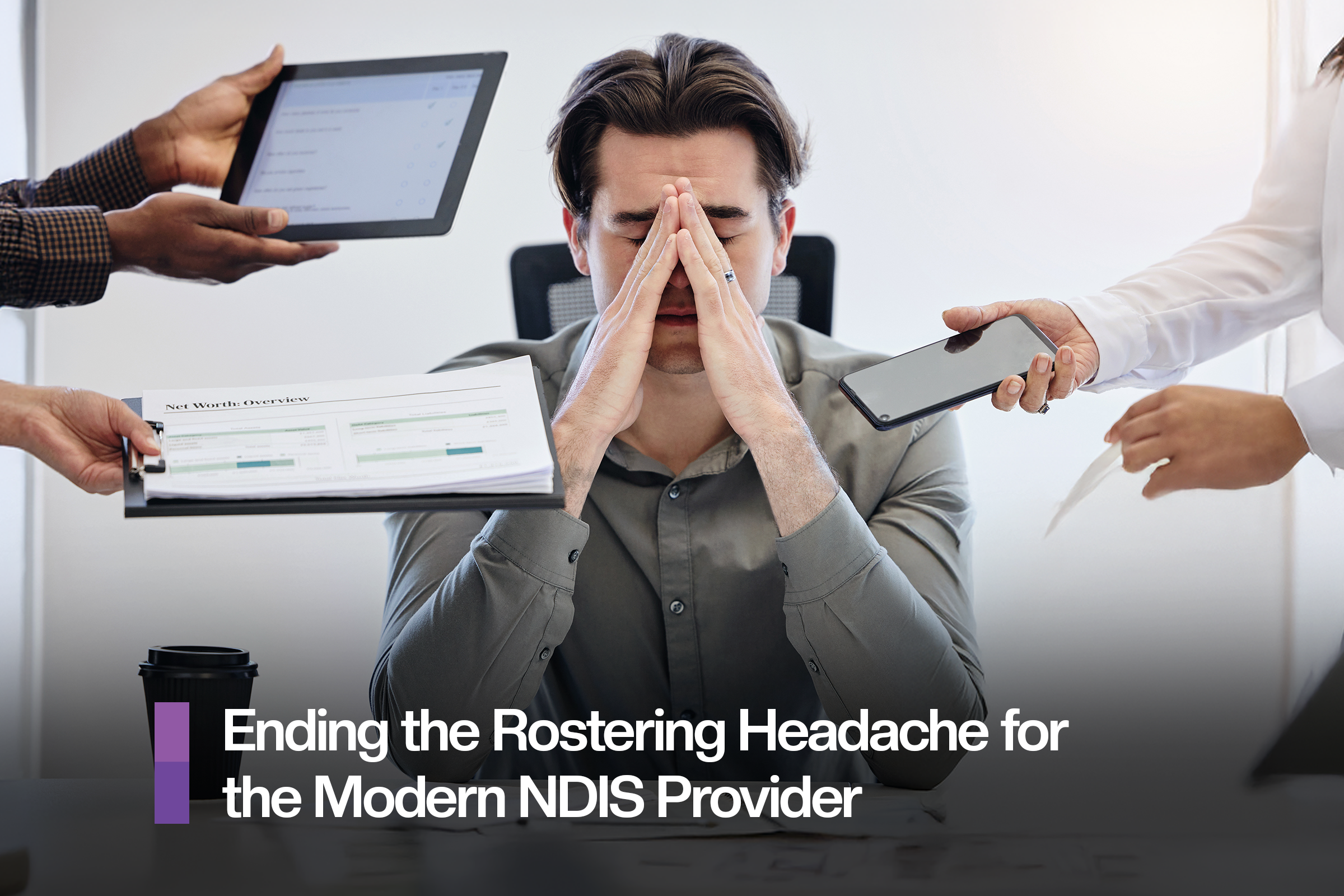Navigating the NDIS Worker Screening Check
A complete guide to the NDIS Worker Screening Check for providers and workers. Learn who needs it, how to apply, verification steps, renewals, common challenges, and how Imploy streamlines compliance for NDIS organisations.

Ensuring the safety and wellbeing of people with disability lies at the heart of the National Disability Insurance Scheme (NDIS). Every registered provider and worker plays a vital role in upholding that trust. One key mechanism designed to safeguard participants is the NDIS Worker Screening Check (NWSC) - a mandatory national process that determines whether a person is cleared to work with people with disability.
If you’re an NDIS provider, support worker, or business owner, understanding the screening check is essential to stay compliant and maintain a safe workforce.
This guide breaks down what the NDIS Worker Screening Check is, who needs it, and how you can manage it efficiently with the help of Imploy.
What is the NDIS Worker Screening Check?
The NDIS Worker Screening Check is a nationally consistent background check conducted by state and territory governments on behalf of the NDIS Quality and Safeguards Commission.
Its purpose is simple but critical: to assess whether a person may pose an unacceptable risk of harm to people with disability.
If the check is successful, the applicant receives an NDIS Worker Screening Clearance, allowing them to work in certain NDIS roles across Australia. If not, they are issued an exclusion, which prohibits them from performing those roles.
A clearance generally lasts five years and is recognised nationally, so you don’t need to reapply if you move states or change employers - provided your clearance remains valid.
Who Needs an NDIS Worker Screening Check?
The screening check applies to anyone working in what’s known as a “risk-assessed role” for a registered NDIS provider. This includes:
- Support workers providing direct care or assistance to participants.
- Supervisors or managers who oversee direct support staff.
- Key personnel who make decisions affecting the delivery of supports or services.
- Sole traders or self-employed providers registered with the NDIS.
If you’re unsure whether a role qualifies as “risk-assessed,” consider this rule of thumb: if the person will have more than incidental contact with participants, they’ll likely need the check.
Note: Unregistered providers and participants who self-manage their funding are not legally required to use the NDIS Worker Screening Check, but many choose to for peace of mind and best-practice risk management.
How to Apply for the NDIS Worker Screening Check?
While the NDIS Worker Screening Check is a national safety requirement, applications are processed by each state or territory’s worker screening unit. The overall process is similar across Australia and typically follows these steps:

Step 1: Apply through your state or territory
Start your application by visiting your local worker screening unit website - such as Service NSW, Worker Screening Unit Victoria, and so on. Each jurisdiction has its own portal and instructions.
Step 2: Verify your identity and nominate your employer
You’ll need to confirm your identity using approved documents and nominate your employer, who must be a registered NDIS provider. Your employer will then verify your details using their Employer ID to link your application correctly.
Step 3: Pay the application fee
Fees vary across states but generally range between $120 and $150. The fee is paid during the online application and must be completed before assessment begins. However, volunteers receives a free or heavily discounted screening checks.
Step 4: Wait for assessment
Your application is reviewed by the screening unit, which checks national criminal history and other relevant records. Processing times can vary - some applicants receive results within days, while others may wait several weeks depending on the complexity of their case.
Step 5: Receive your clearance or exclusion
Once the assessment is finalised, you’ll receive either a clearance or exclusion. Approved clearances are automatically added to the NDIS Worker Screening Database (NWSD). You can then share your clearance with multiple employers and do not need to reapply unless your clearance expires or is revoked.
Completing the NDIS Worker Screening Check is an essential step for anyone working in a risk-assessed role within the NDIS. Understanding the process helps ensure a smooth application and prevents delays in starting work. By staying proactive, applying early, and keeping your clearance details up to date, you ensure compliance - and contribute to a safer and more trusted disability support sector.
How Providers Verify and Manage Worker Clearances?
For registered NDIS providers, compliance doesn’t end once a worker applies. Providers have a duty to verify, record, and monitor each worker’s clearance.
Your Key Responsibilities Include:
- Linking each worker to your organisation in the NDIS Worker Screening Database.
- Ensuring no one in a risk-assessed role starts work before receiving clearance.
- Keeping records of clearance details, expiry dates, and renewal reminders.
- Monitoring updates in case a worker’s clearance is suspended or revoked.
These tasks can be complex and time-consuming, especially for larger organisations managing multiple staff and contractors. That’s where workforce management platforms like Imploy make compliance simple.
How Imploy Streamlines Worker Screening Compliance
Managing NDIS Worker Screening obligations can quickly become overwhelming, especially when you’re juggling onboarding, rostering, incident reporting, and ongoing audits. Imploy is designed to take the stress out of compliance by giving providers a smarter, more automated way to track and manage clearances.
Here are the key ways Imploy helps:
1. Centralised Worker Compliance Profiles
Imploy allows providers to store all worker documentation, including NDIS Worker Screening Clearances - in one secure profile. This makes it easy to upload clearance documents, record expiry dates, and keep everything audit-ready.
2. Automated Expiry Alerts & Renewal Reminders
Instead of manually tracking when each worker’s clearance expires, Imploy sends automated alerts. This helps prevent lapses, ensures your workforce stays compliant, and reduces the risk of accidental non-compliance.
3. Verification Support Through Linked Worker Records
While providers must formally verify clearances in the NDIS Worker Screening Database (NWSD), Imploy helps by mirroring your internal workforce records in the platform. This means you can instantly check who is cleared, who is pending, and who needs follow-up.
4. Streamlined Onboarding Workflows
Imploy automates onboarding checklists so new workers must complete screening, induction modules, police checks, and training before they are marked “active.” This makes compliance part of your standard hiring process, not an afterthought.
5. Only Roster Approved Workers
With integrated rostering, Imploy helps ensure workers are only scheduled if their required checks and documents - like the NDIS Worker Screening Clearance are valid and up to date. This prevents accidental rostering of un-cleared staff into risk-assessed roles.
6. Organisation-Wide Compliance Dashboard
Managers can see the entire workforce’s compliance status at a glance - clearances, pending applications, expired checks, missing documents, and more. This reduces administrative effort and makes audits far easier.
By combining automated reminders, centralised documentation, onboard workflows, and compliance-based rostering, Imploy makes it significantly easier for NDIS providers to manage the Worker Screening Check process - from application to ongoing monitoring.
Common Challenges (and How to Avoid Them)
Even experienced providers can run into issues managing worker screening. Here are the most common pitfalls, and how to stay ahead of them:
1. Delayed applications
If a worker applies late or the provider delays verification, start dates can be pushed back. Encourage workers to apply as soon as an offer is made.
2. Unclear role classification
If you’re unsure whether a role is “risk-assessed,” seek guidance from the NDIS Commission. It’s safer to complete the check than risk non-compliance.
3. Missed renewals
Expired clearances can halt service delivery. Use a system like Imploy to automate reminders and renewal tracking.
4. Poor record-keeping
Relying on manual spreadsheets is risky. Centralised digital systems ensure all staff records are audit-ready and securely stored.
Renewals, Suspensions, and Revocations
A worker’s clearance can be suspended or cancelled if new information indicates they may pose a risk. Providers are notified through the NDIS Worker Screening Database and must immediately remove that worker from any risk-assessed role.
Clearances last up to five years, and renewal applications can be submitted up to 90 days before expiry. Failing to renew in time can prevent a worker from continuing in their role.
The Bigger Picture: Why Worker Screening Matters
Beyond compliance, the NDIS Worker Screening Check fosters a culture of trust, safety, and accountability across the sector. It reassures participants and families that every support worker and provider has met rigorous national safety standards.
As Australia’s disability workforce grows, maintaining these standards is key to ensuring the integrity of NDIS supports and services.
Final Thoughts
The NDIS Worker Screening Check is more than a regulatory requirement - it’s a cornerstone of participant safety and provider integrity. By understanding how the process works and managing it proactively, you protect your clients, your team, and your reputation.
With Imploy, NDIS providers can streamline screening management, automate compliance tracking, and ensure every worker stays cleared, compliant, and ready to deliver quality care.
Frequently Asked Questions (FAQs)
1. How long does the NDIS Worker Screening Check take?
Processing times vary by state and the complexity of the applicant’s history. Some checks are completed within a few days, while others - particularly those requiring further assessment may take several weeks.
2. How long is an NDIS Worker Screening Clearance valid?
A clearance is valid for five years and is recognised nationally. Workers may use the same clearance across multiple employers, as long as it remains valid.
3. Do unregistered NDIS providers need to use the Worker Screening Check?
Unregistered providers are not legally required to use the NDIS Worker Screening Check. However, many choose to complete it voluntarily to increase trust and credibility with participants.
4. Can a worker start before receiving clearance?
No. Workers cannot begin a risk-assessed role until they have an active NDIS Worker Screening Clearance. Providers must confirm this through the NDIS Worker Screening Database (NWSD).
5. What happens if a worker’s clearance is suspended or revoked?
If a clearance is suspended or revoked, the provider is notified through the NWSD. The worker must be immediately removed from any risk-assessed role until the matter is resolved.
6. How much does the NDIS Worker Screening Check cost?
Fees vary by state and territory but typically range between $120 and $150. The fee is paid during the application process.





